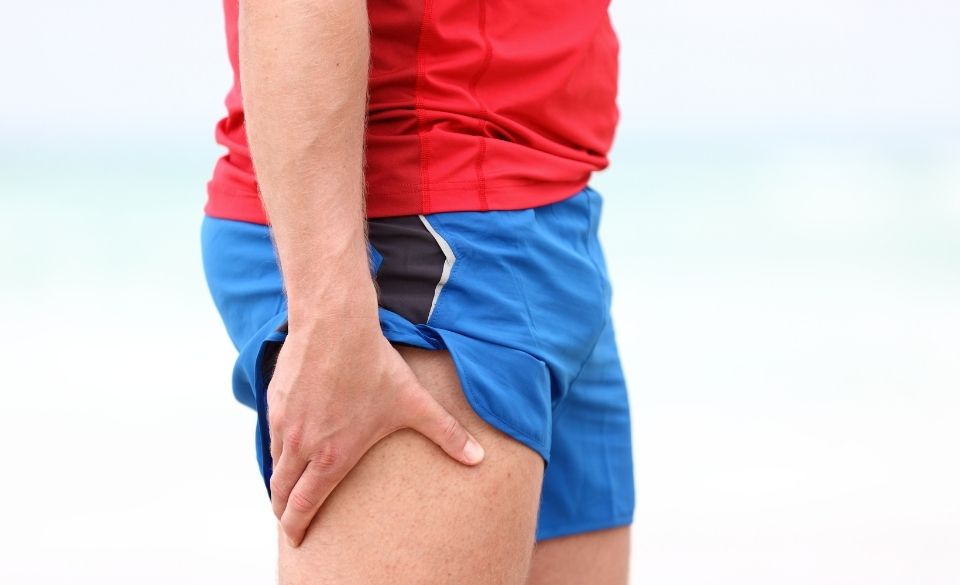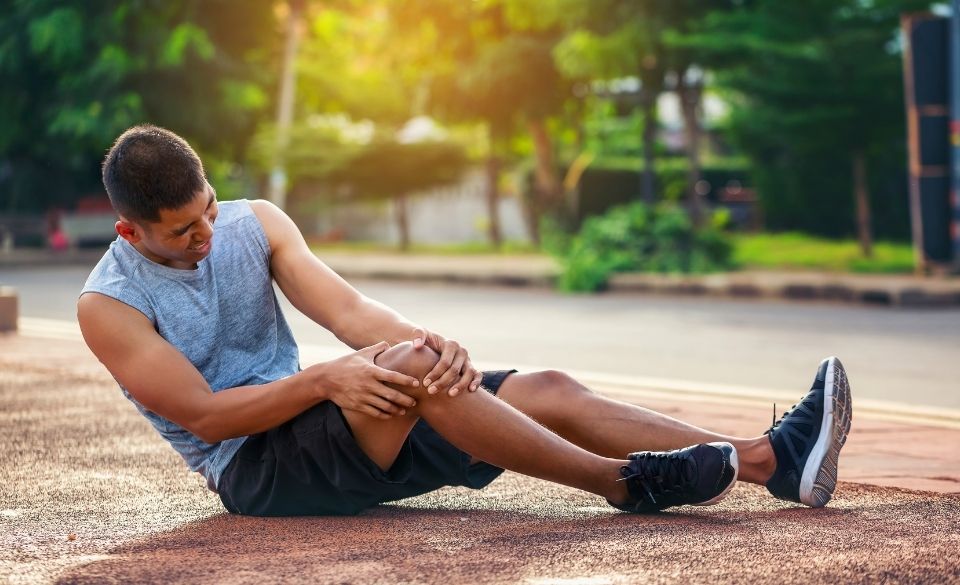
How To Treat & Prevent Iliotibial Band Syndrome
Page Contents
Iliotibial band syndrome is an overuse injury of the outer thigh and knees connective tissues. It is a common injury that most runners experience at least once. Thus it affects all different types of runners and fitness levels.
Studies have shown that Iliotibial band syndrome accounts for at least 10% of all running injuries. Luckily there are ways to treat and prevent Iliotibial band syndrome so you can continue on training.
In this article, we discuss:
– What is IT Band Syndrome
– How To Treat Iliotibial Band Syndrome
– The Symptoms And Causes Of Iliotibial Band Syndrome
If you are struggling with this injury, keep reading. This article may help you diagnose, treat and prevent IT Band Syndrome.
What Is It Band Syndrome?
First, the IT band is not a muscle. It is a thick tendon that travels from the iliac crest (outside of the hip) down the outside of the thigh. It then crosses over the knee joints and inserts into the lateral segment of the kneecap (Patella) and onto the tibia, which is a large bone of the lower leg.
The IT Band attaches to three different muscles. The gluteus medius, gluteus minimus, and vastus lateralis.
The IT Band has a primary function, and that is to ensure lateral stability in lower extremity. That means the IT band helps coordinate muscle function and helps stabilize your foot strike when running.

Symptoms & Causes Of Iliotibial Band Syndrome
There are many causes of Iliotibial Band Syndrome. However, the most common cause relates to a tight IT band. This can happen when the IT band becomes tight and as a result, creates friction at the knee and hip. For example, when the ITB becomes tight, it can cause rubbing between the band and the knee, which leads to pain and discomfort.
Tightness and weak muscles in the glutes and hip muscles are usually a cause of tight IT bands, which can also result in Iliotibial Band Syndrome. Other things like the repetitive action of running can also lead to stress and strain on the IT, which can be another cause of ITBS.
Symptoms of Iliotibial Band Syndrome are usually pain and tenderness along the outer side of the knee. You will often experience pain where the bone hits above the joint. It is also common to feel a clicking sensation.
The clicking sensation you may experience is caused by the Iliotibial band tightening and cracking when running. This clicking sensation is usually felt across the knee joint when bending and straightening the knee.
The most common symptoms of Iliotibial band syndrome are:
– Swelling and a burning feeling on the outside of the knee
– A clicking sensation when bending the knee
– Sore and tight IT bands
– Pain and tenderness on the lateral side of the hip or knee
If you have developed ITBS, you will find that the pain often worsens when you run up or downhills. However, when you walk, the pain will usually subside.
Like most overuse injuries in running IT band syndrome gradually develops over time. That means you can usually prevent it before it affects your running. However, if left untreated, it will gradually worsen, forcing the runner to stop from further training.
Along with overuse injuries, muscle imbalances in the lower body are another cause. Weak hamstrings, hip flexors, and a lack of flexibility are the most common causes. Other causes of Iliotibial band syndrome are:
– Running in the wrong shoes
– Overtraining
– Running on banked surfaces
– Increased training load
– Poor ankle range of motion
– Too much downhill running
How To Treat Iliotibial Band Syndrome
When it comes to treating Iliotibial band syndrome, the first thing you should do is rest. Using the R.I.C.E strategy (rest, ice, compression, elevation) can help relieve discomfort and speed up the healing process.
If you feel any pain along the ITB or at the hip or knees, back off from running and ice the area 2-3 times per day. You can also apply compression to the area to reduce inflammation and pain.
Alternatively, if the pain is severe, you can use anti-inflammatory drugs such as ibuprofen to reduce the pain.
Like most injuries, it is important to let the injured area recover at its own rate. Continuing running will only exacerbate the symptoms.
The amount of recovery time will vary between people. This depends on the severity of the injury. However, if you notice the symptoms early on, a few days off running will usually do the trick.
For people that continue running through the injury, to a point where they can anymore, expect a minimum of a few weeks up to a few months to recover. But that doesn’t mean you can’t do other forms of exercise.
During the recovery stage of ITBS, you can replace running with some form of cross-training. Just make sure that you don’t put too much stress on the injured area.
Alternatively spend some time trying to strengthen the glute and hip muscles, as the muscle groups located there are often weak and a major cause of ITBS.
Some basic exercises you can do to help strengthen these areas at home include:
– Lateral Leg Raises
– Clam Shells
– Hip Raise
– Hip Thrusts
– Lying Glute Stretch
Last but not least is to go see a masseuse or use a foam roller at home. Both can help relieve any tightness in the hamstrings, hips, and quadriceps. Both forms of massage therapy can help reduce inflammation and lengthen the IT band.
If rest, icing, and massage still hasn’t helped, speak to a qualified physiotherapist. They can help provide a recovery program for you which may include stretching and strengthening exercises.
However, for most people, taking a rest from running will sort out the issue.



